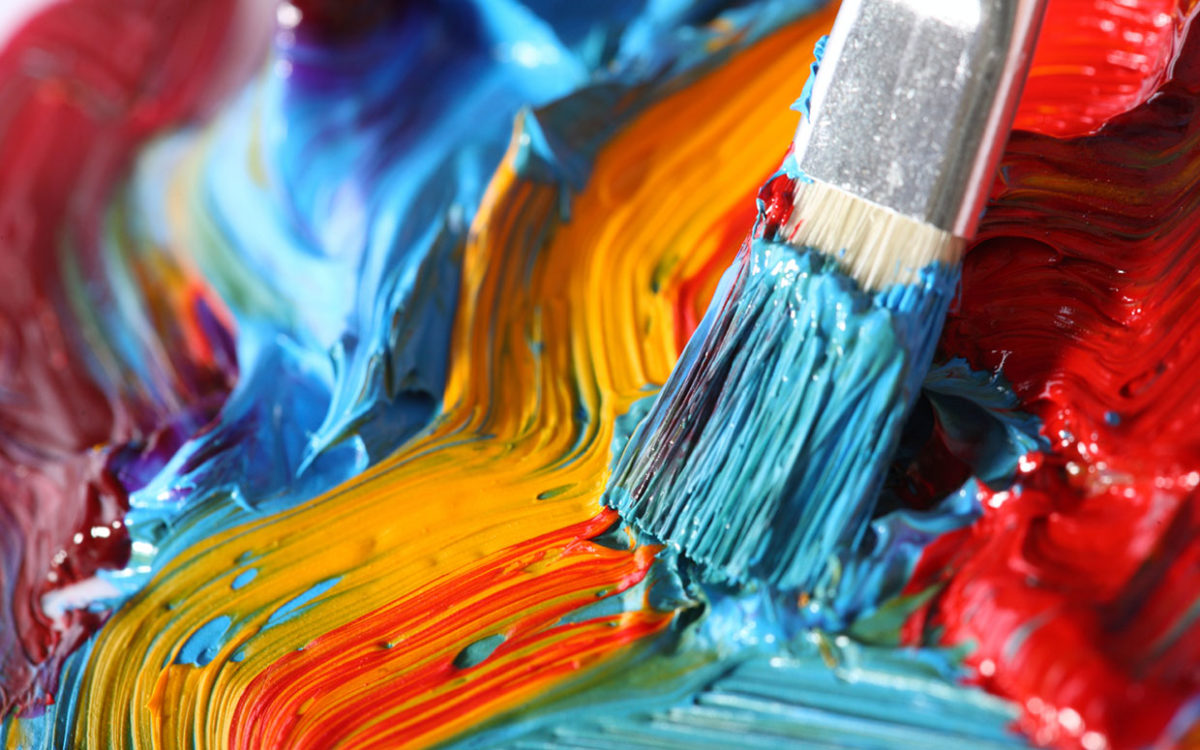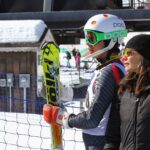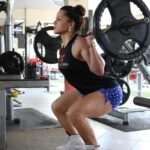The race season is somewhere between one-half and two-thirds over for racers, depending on their age and level of development. Racers are deep into qualifying season as the end-of-year championships are approaching rapidly. Now is the time that you have to ski your fastest. The tough question, though, is how to achieve that goal at this point in the season.
Especially for young racers who are still developing, it is essential for you to continue your on-snow technical and tactical development, working on everything from stance to hand position to separation to line, the list goes on. At the same time, on race day, I believe that too much thinking about technique and tactics this time of the season can actually prevent you from skiing your fastest. In fact, in some parts of your training and definitely on race day, I suggest that you let go of your focus on technique and tactics and zero in on just going as fast as you can.
Here’s a distinction I make that will help you better understand where I’m coming from: Be a scientist in training and an artist in races.
Scientist
There’s a place for being a scientist in your ski racing life. What I mean by scientist is that there are times when you need to be logical, rational, analytical, organized, and methodical in your pursuit of your ski racing goals. You need to focus on every detail where you make sure that every “t” is crossed and every “i” is dotted. As a scientist, this attention to detail helps you get the most out of your training efforts and make the most technical and tactical gains in your skiing. Being a scientist also enables you to feel more prepared, confident, comfortable, and in control as you head into races. Being the scientist is usually best when you are training as well as planning, organizing, and preparing for a race. Scientists always have their bases covered because they know that if they miss any detail, it can ruin their efforts at a positive outcome.
 In some ways, being a scientist is very safe and comfortable. You’re always in control, there is less risk and less vulnerability, and success and failure is clearly defined and objective. At the same time, a downside to being a scientist is that, by having total control, you will have less ability to let it go and truly “rip” a race run. Additionally, scientists are less likely to take risks (I have a feeling I’m going to get some blowback from the scientists who read this post) and, as a result and as I noted in my last article, Risk it for the Biscuit, there are going to be usually fewer rewards.
In some ways, being a scientist is very safe and comfortable. You’re always in control, there is less risk and less vulnerability, and success and failure is clearly defined and objective. At the same time, a downside to being a scientist is that, by having total control, you will have less ability to let it go and truly “rip” a race run. Additionally, scientists are less likely to take risks (I have a feeling I’m going to get some blowback from the scientists who read this post) and, as a result and as I noted in my last article, Risk it for the Biscuit, there are going to be usually fewer rewards.
“Don’t think. Thinking is the enemy of creativity. It’s self-conscious, and anything self-conscious is lousy. You can’t try to do things. You simply must do things.” Ray Bradbury, science fiction author
Artist
Just as painters use their palette of paints and sculptors use their clay, you are using the race hill and course to express yourself as a ski racer by painting a picture of exceptional skiing in your races. To do so, you set aside the cerebral, rational, and analytical scientist in you and tap into the the part of you that is the artist: spontaneous, emotional, and inspired. Painters don’t think about and decide where to place every paint stroke and dancers don’t think about every step they take. Instead, artists see a vision in their mind’s eye and express that vision in their particular medium. For ski racers, rather than thinking your way down a course as the scientist in you might (which pretty much guarantees a slow run), as an artist, you give up conscious control of your skiing. In doing so, you trust your unconscious and deeply ingrained capabilities that allow your mind and body to do what you’ve trained them to do.
You should start by incorporating your being an artist into your training; just like with technique and tactics, you don’t want to introduce something new and untried on race day. You begin to get in touch with your “artistic” side in training by, instead of focusing on technique and tactics all of the time, you devote two training runs a day to just going as fast as you can. Ideally, these two artistic runs should be your first two of the day to simulate what you must do on race day. You turn your scientific mind off and allow your spirit and emotions to drive you to fast skiing.
When you arrive at a race, that is the time to set aside your being a scientist and shift to being an artist. The emphasis as an artist on race day is to connect your unconscious mind with your physical experience of skiing (you ski in your body, not your mind) and generate emotional feelings (e.g., excitement, pride, inspiration) that will propel you down the hill as fast as you can.
Skiing as an artist can be pretty uncomfortable the first few times you try tapping into that side of your ski racing. It may not feel quite “right” because it is new and different. Also, when you give up the conscious control that the scientist brings to your skiing, you make yourself vulnerable because you are taking a risk. Yet, in that willingness to let go of that control, you give yourself the opportunity to free yourself from doubt, worry, and fear and open yourself up to throwing yourself down the course with confidence, courage, and reckless abandon. And, in doing so, you bring all of your talents and efforts to the fore, enabling you to ski your very fastest and, hopefully (because there are no guarantees in ski racing), accomplish the ski racing goals you’ve set for yourself.
This article is excerpted and revised from my latest mental training book, Train Your Mind for Athletic Success: Mental Preparation to Achieve Your Sports Goals.





